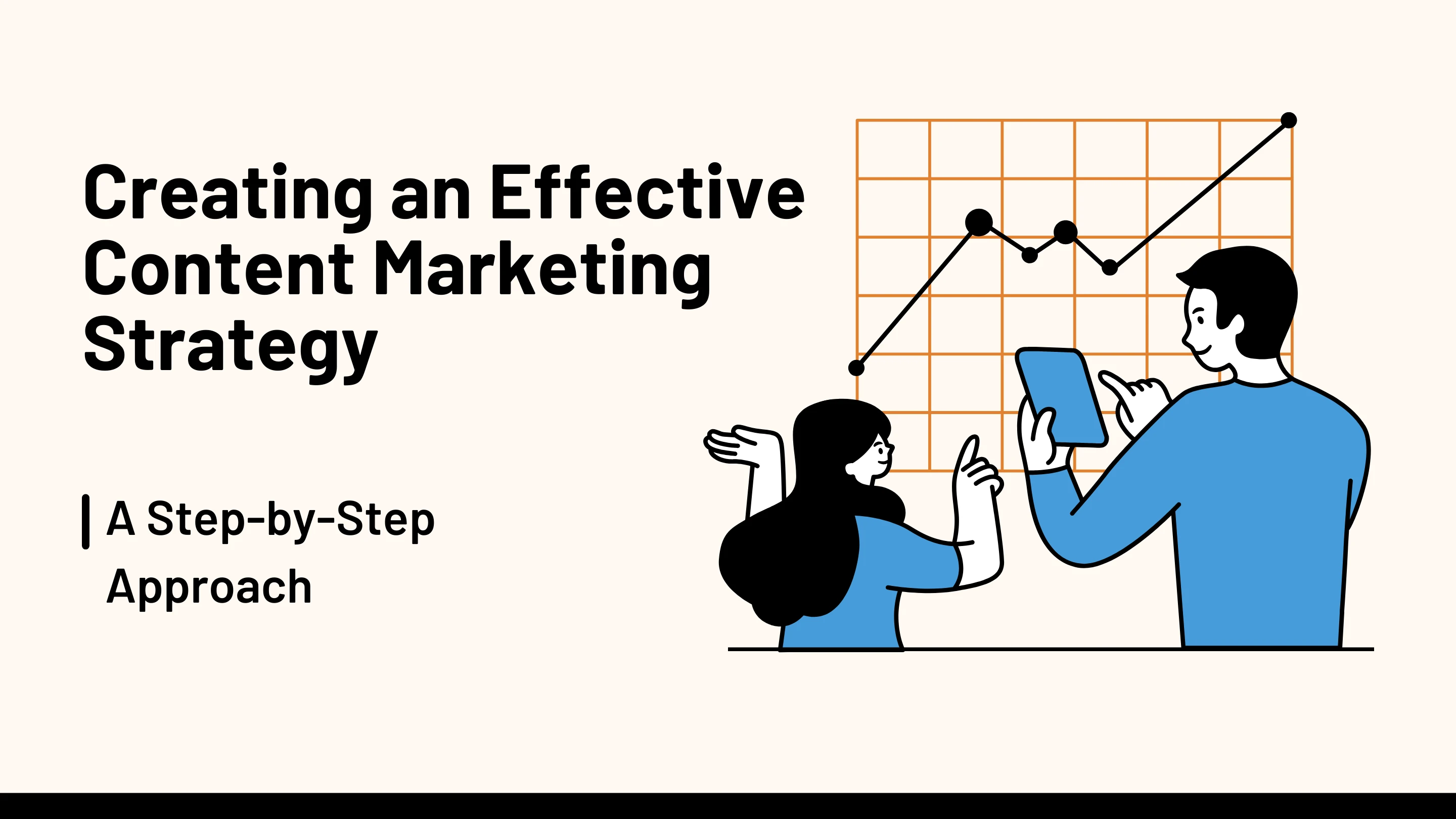
In the digital age, content marketing has become a cornerstone of successful marketing strategies. For businesses looking to enhance their online presence, drive traffic, and engage their audience, developing a well-structured content marketing strategy is essential. This blog will guide you through a step-by-step approach to creating an effective content marketing strategy that aligns with your SEO goals.
Why is a Content Marketing Strategy Important?
A content marketing strategy helps you:
- Define Your Goals: Establish clear objectives for your content efforts.
- Understand Your Audience: Identify and understand your target audience’s needs and preferences.
- Create Consistent Content: Ensure that your content is relevant, valuable, and consistent across all platforms.
- Measure Success: Track performance and make data-driven decisions to improve your strategy.
Step 1: Define Your Goals
Before creating content, it’s crucial to define what you want to achieve. Your goals should be SMART: Specific, Measurable, Achievable, Relevant, and Time-bound. Here are some common content marketing goals:
- Increase website traffic by 30% in the next six months.
- Generate 100 new leads per month through content downloads.
- Improve engagement on social media by 50% over the next quarter.
Actionable Tip:
Write down your goals and ensure they align with your overall business objectives. Share them with your team to create a unified vision.
Step 2: Understand Your Audience
Knowing your audience is key to creating content that resonates with them. Conduct thorough research to understand their demographics, interests, pain points, and preferences.
Actionable Steps:
- Create Buyer Personas: Develop detailed profiles of your ideal customers, including their age, gender, location, interests, and challenges.
- Conduct Surveys and Interviews: Gather insights directly from your audience through surveys or interviews to understand their needs better.
- Analyze Competitors: Look at your competitors’ content to see what resonates with their audience.
Step 3: Conduct Keyword Research
Keyword research is essential for aligning your content with SEO goals. Identify relevant keywords that your target audience is searching for, and use these keywords to guide your content creation.
Actionable Steps:
- Use Keyword Research Tools: Utilize tools like Google Keyword Planner, SEMrush, or Ahrefs to find keywords related to your industry.
- Focus on Long-Tail Keywords: Target long-tail keywords that are specific and have lower competition, making it easier to rank for them.
- Analyze Search Intent: Understand the intent behind the keywords (informational, navigational, transactional) to create content that meets user needs.
Step 4: Develop a Content Calendar
A content calendar helps you plan and organize your content creation efforts. It ensures that you publish content consistently and strategically.
Actionable Steps:
- Choose a Format: Decide on the types of content you want to create (blog posts, videos, infographics, etc.).
- Plan Your Topics: Based on your keyword research and audience insights, brainstorm content topics that align with your goals.
- Set a Publishing Schedule: Determine how often you will publish content (e.g., weekly, bi-weekly) and create a timeline for each piece.
Example Content Calendar Template:
| Date | Content Type | Topic | Keywords | Status |
| 01/15/2025 | Blog Post | Benefits of Local SEO | local SEO, SEO tips | Draft |
| 01/22/2025 | Video | How to Optimize for Mobile SEO | mobile SEO, optimization | In Progress |
| 01/29/2025 | Infographic | Content Marketing Statistics | content marketing stats | Scheduled |
Step 5: Create High-Quality Content
Now it’s time to create content that is valuable, engaging, and optimized for SEO. Focus on providing solutions to your audience’s problems and answering their questions.
Actionable Steps:
- Write Compelling Headlines: Craft attention-grabbing headlines that include your target keywords.
- Use Visuals: Incorporate images, infographics, and videos to enhance your content and make it more engaging.
- Optimize for SEO: Include keywords naturally in your content, use header tags, and optimize meta descriptions and alt text for images.
Step 6: Promote Your Content
Creating great content is only half the battle; you also need to promote it effectively to reach your audience.
Actionable Steps:
- Leverage Social Media: Share your content on social media platforms where your audience is active. Use relevant hashtags to increase visibility.
- Email Marketing: Send newsletters featuring your latest content to your subscribers and encourage them to share it.
- Engage with Influencers: Collaborate with industry influencers to amplify your content reach and credibility.
Step 7: Measure and Analyze Performance
To understand the effectiveness of your content marketing strategy, you need to track and analyze performance metrics.
Actionable Steps:
- Use Analytics Tools: Utilize tools like Google Analytics to monitor website traffic, user behavior, and conversion rates.
- Track Key Metrics: Focus on metrics such as organic traffic, bounce rate, time on page, and social shares to gauge content performance.
- Adjust Your Strategy: Based on the data collected, make necessary adjustments to your content strategy to improve results.
Conclusion
Creating an effective content marketing strategy that aligns with your SEO goals requires careful planning, execution, and analysis. By following this step-by-step approach, you can develop a strategy that not only engages your audience but also drives traffic and conversions. Remember that content marketing is an ongoing process, so continually refine your strategy based on performance data and audience feedback.
If you have any questions or need further assistance in developing your content marketing strategy, feel free to reach out!







